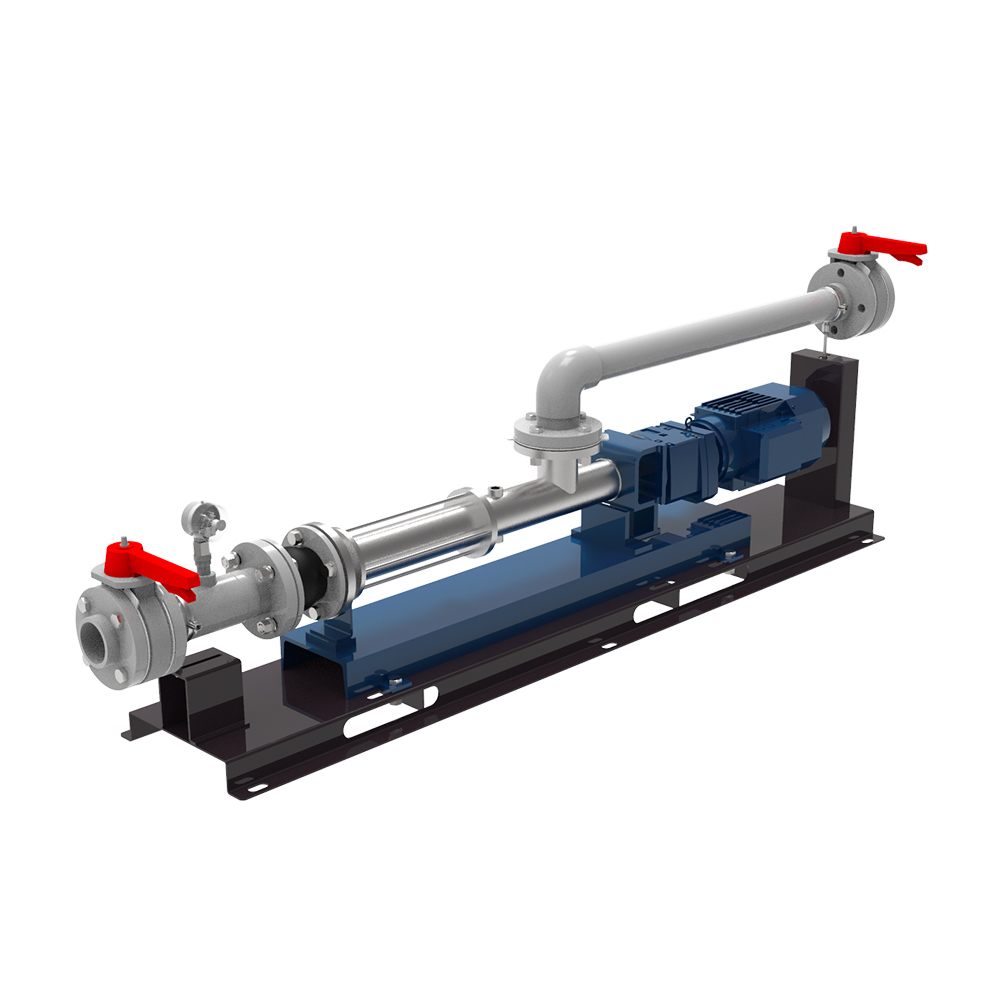Screw Pump Efficiency and Energy Saving
Screw pumps have become an indispensable technology in modern fluid handling, especially where stable, pulse-free flow and energy-conscious operation are required. Unlike centrifugal pumps, which rely on high rotational speed and often suffer from efficiency loss under varying conditions, screw pumps provide consistent volumetric displacement. Their design not only ensures reliability but also positions them as one of the most energy-efficient pumping technologies available for industries committed to reducing operational costs and environmental impact.
Understanding Screw Pump Efficiency
At their core, screw pumps are positive displacement devices. Fluid is transported through cavities formed between rotating screws and the pump casing. Because the flow is continuous and non-pulsating, energy is used directly for fluid displacement rather than overcoming turbulence or pressure spikes. This inherent design efficiency translates into lower energy consumption compared to other pump types, particularly when handling viscous, abrasive, or multiphase fluids.
Key Efficiency Advantages
1. Volumetric Efficiency – Screw pumps achieve high volumetric efficiency, especially with viscous fluids, as slippage is minimal even under high pressure.
2. Mechanical Efficiency – The simple rotation of screws reduces energy losses through friction and turbulence.
3. Adaptability to Variable Loads – Efficiency remains stable across different flow rates and pressures, avoiding the steep efficiency drop common in centrifugal pumps.
4. Reduced Auxiliary Energy Use – Low vibration and noise minimize the need for extra damping systems, lowering indirect energy costs.
Energy Savings in Industrial Applications
Energy costs represent a significant share of operating expenses in industries such as water treatment, petrochemicals, metallurgy, and power generation. Screw pumps, through their efficient fluid transfer mechanism, directly address this challenge.
Handling Viscous Fluids:
Many traditional centrifugal pumps face major challenges when tasked with transferring high-viscosity fluids such as heavy crude oil, polymers, resins, or mineral slurries. These pumps often require higher rotational speeds and auxiliary heating to maintain flow, which increases energy demand. Screw pumps, by contrast, are inherently designed to accommodate viscous fluids. Their helical rotors create sealed cavities that move the liquid smoothly and steadily from inlet to outlet, minimizing slippage and reducing the power needed per unit of fluid transferred.
Constant Flow Systems:
In cooling systems, lubrication circuits, and hydraulic drives, maintaining a constant flow is essential to system stability. Centrifugal pumps in such applications can suffer from efficiency losses when the system operates at partial loads, resulting in energy wasted through throttling or recirculation. Screw pumps avoid this issue because their positive displacement design ensures a steady, pulsation-free flow regardless of pressure fluctuations. This eliminates the need for energy-wasting bypass or recirculation loops and translates into lower overall power consumption across long operating cycles.
High Reliability and Reduced Downtime:
Energy efficiency is not only about the immediate power draw of a pump but also about ensuring systems operate continuously without interruption. Screw pumps are known for their robust construction and minimal wear characteristics, especially when handling abrasive or corrosive fluids. By reducing unplanned downtime and extending maintenance intervals, screw pumps minimize the indirect energy losses associated with process interruptions, system restarts, or emergency bypass operations. In industries like petrochemicals or metallurgy, where shutdowns can require significant energy to restart processes, this reliability directly contributes to overall energy savings.
Optimized System Integration:
Modern screw pumps can also be integrated with variable frequency drives (VFDs) and smart monitoring systems, enabling operators to match pump performance more closely to real-time process demands. This prevents pumps from running at higher speeds or pressures than necessary, further reducing energy consumption. The combination of inherent mechanical efficiency and digital control systems creates opportunities for both direct and indirect energy savings across diverse applications.

Environmental Benefits
Screw pumps contribute to emission reduction by decreasing overall energy demand. In plants where pumps account for up to 20–30% of electricity usage, transitioning to screw pumps can yield measurable carbon footprint reductions. Additionally, their leak-free designs reduce the risk of environmental contamination by hazardous fluids, aligning with sustainability goals.
Cost Savings and Lifecycle Value
Energy efficiency translates directly to cost reduction. For example, in a chemical processing facility operating multiple pumps around the clock, even a 5–10% improvement in pump efficiency can result in significant annual savings on energy bills. When combined with lower maintenance needs, longer service life, and high operational reliability, screw pumps deliver a superior total cost of ownership (TCO).
Example of Lifecycle Cost Comparison
| Factor | Screw Pump | Centrifugal Pump | Gear Pump |
| Energy Consumption | Low | Medium–High | Medium |
| Maintenance Frequency | Low | Medium | High |
| Service Life | Long | Medium | Medium |
| Handling of Viscous Fluids | Excellent | Poor | Good |
Optimizing Screw Pump Operation for Energy Saving
While screw pumps are inherently efficient, their performance can be further optimized through:
1. Variable Frequency Drives (VFDs): Adjusting pump speed according to demand prevents unnecessary energy use.
2. Proper Sizing: Oversized pumps waste energy; accurate sizing ensures the pump runs at its best efficiency point.
3. Regular Maintenance: Monitoring wear on screws, bearings, and seals ensures efficiency is not compromised.
4. System Integration: Using screw pumps with automated monitoring systems enables predictive maintenance and reduces downtime-related energy loss.
Applications Demonstrating Efficiency Gains
Oil and Gas: Used in crude oil transfer and multiphase pumping, screw pumps reduce energy intensity compared to centrifugal alternatives.
Power Plants: Screw pumps provide high-efficiency fuel oil handling and lubrication with stable flow under varying conditions.
Water and Wastewater Treatment: Their ability to dose and transfer sludges with low energy consumption makes them ideal for sustainability-focused utilities.
Automotive Manufacturing: Energy savings are realized in paint circulation systems, where precise flow reduces waste and improves finish quality.
Future Outlook
As industries continue to prioritize sustainability and energy optimization, screw pumps will play a central role in energy-efficient fluid handling systems. Advances in materials, coatings, and digital monitoring are further enhancing efficiency, extending service life, and reducing operational costs. Integration with smart industrial systems ensures that screw pumps remain aligned with future trends in automation, predictive maintenance, and environmental responsibility.
Screw pumps combine mechanical simplicity with energy-conscious performance. Their ability to handle diverse fluids efficiently, maintain stable flow under varying conditions, and reduce total energy demand positions them as vital tools for industries striving for cost reduction and emission control. In the broader framework of sustainable manufacturing and resource efficiency, screw pumps stand out as not just a pumping solution but a strategic asset for energy saving and operational excellence.


